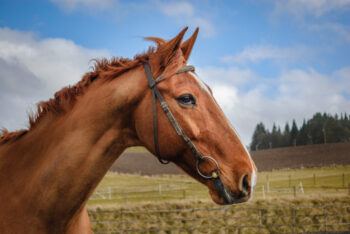Texas A&M Researchers Uncover Horse Genetic Secrets for Conservation, Breeding

Research conducted at Texas A&M University’s College of Veterinary Medicine and Biomedical Sciences sheds light on the genetic makeup of the Y chromosome in horses.
Getty Images
Researchers at the Texas A&M College of Veterinary Medicine and Biomedical Sciences (VMBS) are helping to uncover new information about the Y chromosome in horses, which will help horse owners identify appropriate breeding lines and help conservationists preserve different species.
“Because of its complex structure, the Y chromosome is very difficult to sequence, which makes our knowledge of it far from complete,” said Dr. Gus Cothran, professor emeritus in the VMBS Department of Veterinary Integrative Bioscience (VIBS). In fact, scientists believed that the Y chromosome lacked genetic diversity, which we believed contributed little to biodiversity. ”
However, Cothran’s new research collaboration, led by the University of Veterinary Medicine in Vienna, has discovered that the Y chromosome has a meaningful difference and is important for species diversity.
“As we recently published in the journal PNAS, we can actually trace the ancestry of horses using the Y chromosome, which is something we couldn’t do before,” Cothran said. “With this new information, we can reconstruct the last 1,500 years of horse breeding and evolution.”
Identifying The Y Chromosome
For decades, it has been difficult for scientists to study the Y chromosome. When the human genome was first published in 1990, it did not include the Y chromosome, which received its first complete sequence in 2023.
“The Y chromosome has a lot of repetitive parts, even some that are palindromes – the same front and back. It makes it difficult to understand which genes are inserted there,” Cothran explained. It is extremely difficult to obtain the Y chromosome sequence of any mammalian species.
As technology has improved, computers have made it easier to work with these pieces of DNA, which has changed the study of the Y chromosome significantly.
“We were able to examine the world’s collection of horse DNA samples and learn where modern horses find their roots,” Cothran said. “Horse breeding has been associated with human history for nearly 4,000 years, and for most of that history, humans have been breeding with horses. This study helped us to see the major influences on breeding and how the historical ways of expanding horses contributed to the spread of horses.”
Studying My Father’s Genealogy
Inbreeding is a popular method used in horses for a number of reasons, one of which is that it is much easier to test the fertility of a horse than a horse.
“Millions can have hundreds of offspring in their lifetime, while females can only carry one or two foals at a time, making it difficult to judge the performance of the offspring,” Cothran said. it quickly.”
Now, pedigrees are how horse owners and breeders find out which horses come from a horse’s lineage, which provides information about the traits a horse may inherit. However, genealogies are handwritten, and can go back only a few generations.
“Our latest research allows us to go back a lot, to see what evolutionary lineages a horse has in its DNA,” Cothran said. Now we can see the big picture of the individual horse lineage.
Preserving Genetic Diversity
Studying the evolutionary history of horse lineages can go from becoming an important part of horse breeding to protecting the health and well-being of exotic species; therefore, the researchers’ new findings about the Y chromosome will have lasting effects on the equine industry.
“One of the main risks in breeding programs for some horses is inbreeding, which occurs when the animals are bred too close together; in horses, it can cause genetic defects such as club foot and loss of fertility,” Cothran explained. “Therefore, equine breeders and keepers are interested in using scientific research to promote genetic diversity genetics.
“If you have a horse from an unusual breed and there’s more than one breed to choose from, maybe you can opt for the unusual breed. , which can help maintain diversity within the species,” he said. “With the new diagnostic capabilities provided by our research, we may find that there are reasons to avoid crossing a particular male lineage to protect the health of the offspring or the future of the species.”
#Texas #Researchers #Uncover #Horse #Genetic #Secrets #Conservation #Breeding